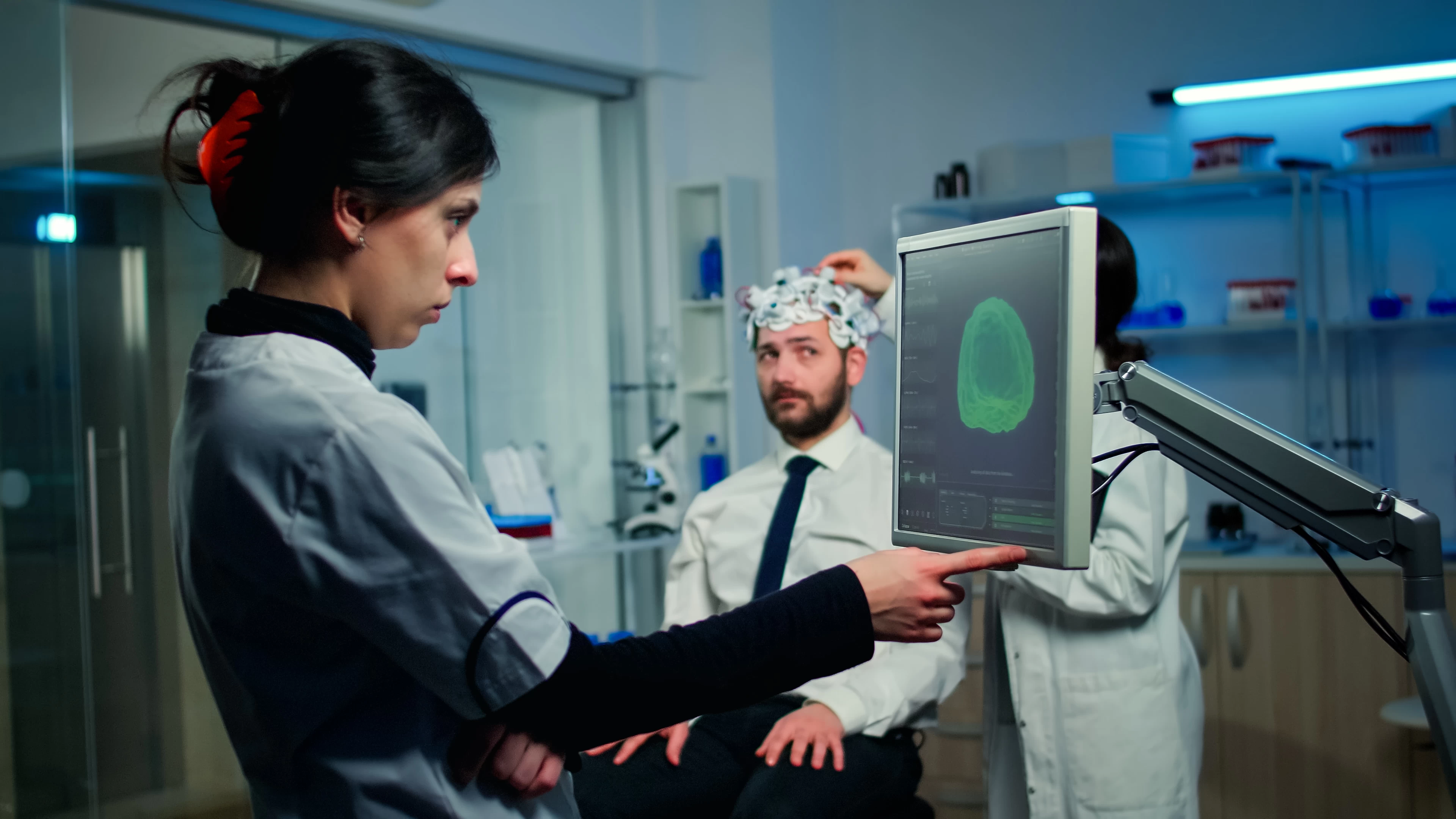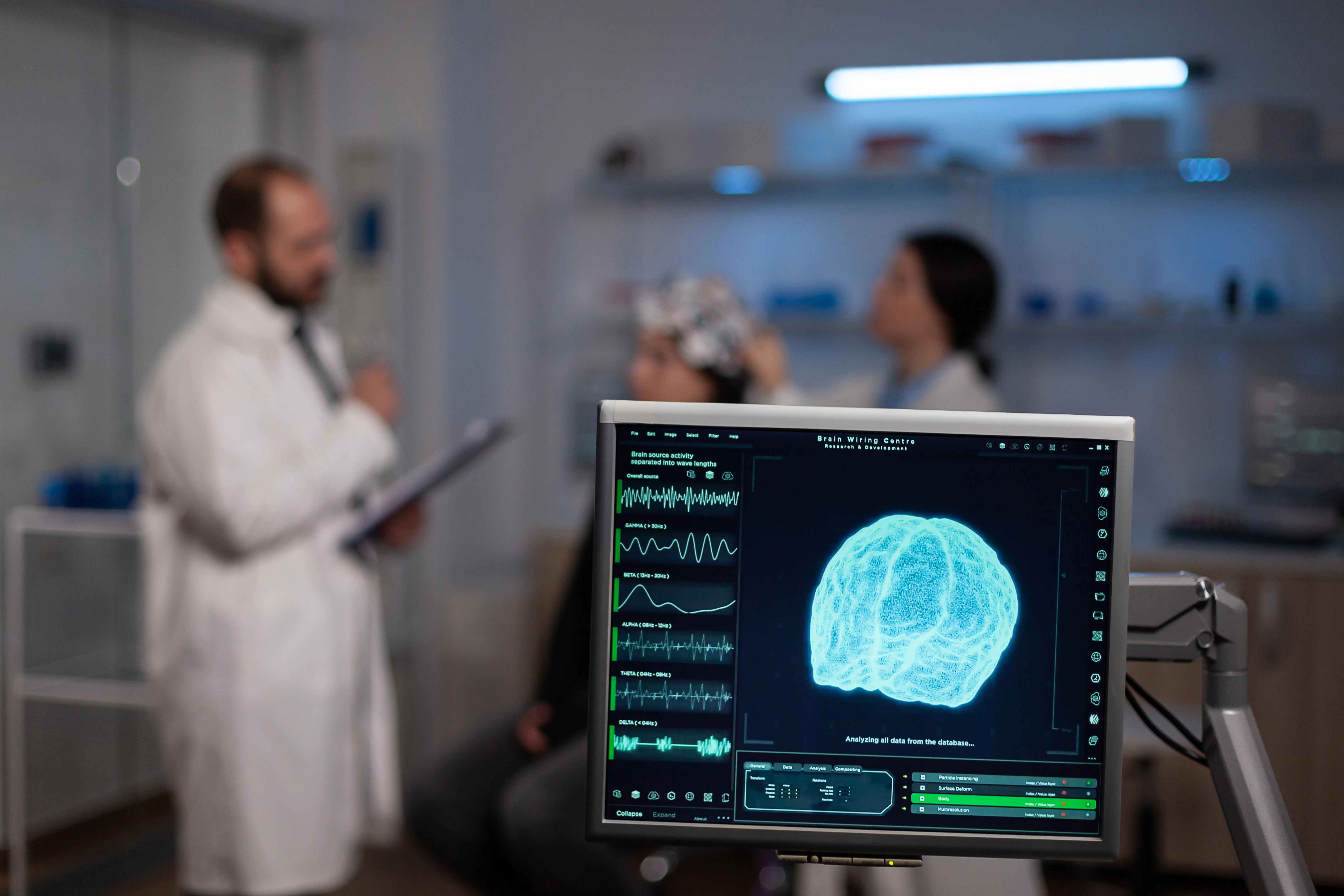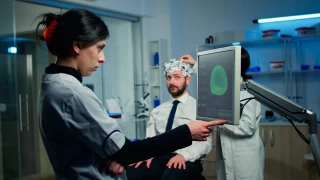
What is Craniotomy?
- What is Craniotomy?
- In Which Situations Is Craniotomy Applied?
- How is Craniotomy Surgery Performed?
- What Are the Types of Craniotomy?
- In Which Diseases Is Craniotomy Applied?
- What are the Points to Consider After Craniotomy?
raniotomy is a surgical procedure that involves removing part of the skull to access and work on the brain. During a craniotomy, the surgeon makes an incision in the scalp and removes a portion of the skull known as the bone flap. The bone flap is then temporarily removed and stored while the surgery is performed on the brain. After the procedure is complete, the bone flap is replaced and fixed using small metal plates, wires or screws.
Craniotomies can be done to treat a variety of brain disorders, including brain tumors, aneurysms, blood clots, and traumatic brain injuries. The procedure is typically done under general anesthesia and patients may need to stay in the hospital for several days to recover. Craniotomy is a complex procedure that carries some risks, such as infection, bleeding, and brain damage, but it can be a life-saving treatment option for some brain conditions.
In Which Situations Is Craniotomy Applied?
Craniotomy is a surgical procedure in which part of the skull is removed to access the brain.
It is used to treat a wide variety of conditions that affect the brain, including:
- Brain tumors: Craniotomy may be done to remove a brain tumor or to take a biopsy for diagnosis.
- Traumatic brain injury: In some severe cases of traumatic brain injury, a craniotomy may be done to remove blood clots or reduce pressure in the brain.
- Brain aneurysm: A craniotomy can be used to clip or bandage a ruptured or unruptured brain aneurysm to prevent bleeding.
- Arteriovenous malformation (AVM): A craniotomy may be done to remove an AVM with an abnormal tangle of blood vessels that can cause bleeding in the brain.
- Epilepsy: In some cases of epilepsy that is not well controlled with medication, a craniotomy may be done to remove the part of the brain that is causing the seizures.
- Hydrocephalus: A craniotomy can be used to place a shunt, which is a tube that drains excess cerebrospinal fluid from the brain to another part of the body.
Craniotomy is a major surgical procedure that carries certain risks and potential complications. The decision to perform a craniotomy is made on a case-by-case basis and the risks and benefits should be carefully considered by the patient and healthcare team.
How is Craniotomy Surgery Performed?
Craniotomy is a surgical procedure that involves removing part of the skull to access the brain.
Here are the general steps of the procedure:
- Anesthesia: The patient is placed under general anesthesia to ensure that he is unconscious and cannot feel pain during the procedure.
- Head positioning: The patient's head is positioned and fixed with a headrest or other device to keep it still during the procedure.
- Incision: The surgeon makes an incision on the scalp that typically provides easy access to the area of the brain that needs to be treated.
- Bone flap removal: The surgeon uses a special tool to remove a portion of the skull bone called the bone flap. The size and location of the bone flap depends on the location and size of the lesion or area of the brain that needs to be accessed.
- Brain access: After the bone flap is removed, the surgeon carefully pulls back the brain covering, called the dura mater, to access the underlying brain tissue.
- Treatment: The surgeon does the necessary treatment, such as removing the tumor, repairing the blood vessels or treating the aneurysm.
- Closure: After the treatment is complete, the surgeon replaces the bone flap and fixes it in place with metal plates, sutures or wires. The scalp incision is then closed with stitches or staples.
- Recovery: The patient is closely monitored in the recovery room and then moved to a hospital room for further monitoring and care.
What Are the Types of Craniotomy?
Craniotomy is a surgical procedure that involves opening the skull to access the brain. There are several types of craniotomy, and the type of procedure used depends on the specific condition being treated.
The following are some of the most common types of craniotomy:
- Standard Craniotomy: This is the most common type of craniotomy, which involves making an incision in the scalp and removing part of the skull to access the brain. The removed part of the skull, known as the bone flap, is usually replaced at the end of the procedure.
- Keyhole Craniotomy: This is a minimally invasive type of craniotomy that involves making a small incision in the scalp and using special tools to remove a small section of the skull. This procedure is typically used for smaller brain tumors and lesions.
- Endoscopic Craniotomy: This is a type of craniotomy that involves using an endoscope, a thin, flexible tube with a camera and light, to view the brain and perform surgery. This type of craniotomy is minimally invasive and can be used for certain types of brain tumors and cysts.
- Decompressive Craniectomy: This is a type of craniotomy that involves removing a larger portion of the skull to relieve pressure on the brain caused by swelling or bleeding. In some cases, the removed part of the skull cannot be replaced, depending on the degree of swelling.
- Transsphenoidal Craniotomy: It is a type of craniotomy that involves accessing the brain through the nasal cavity and sphenoid bone. This procedure is used to remove pituitary tumors and other lesions in the area.
The type of craniotomy used depends on several factors, including the location and extent of the lesion or injury, the overall health of the patient, and the surgeon's experience and preference.

In Which Diseases Is Craniotomy Applied?
Craniotomy is a surgical procedure that involves removing part of the skull to access the brain.
It can be used for a variety of medical conditions, including:
- Traumatic brain injury: Craniotomy may be needed to remove blood clots or repair damage caused by head trauma.
- Brain tumors: Craniotomy can be used to remove tumors from the brain or to take a biopsy of brain tissue to diagnose the type of tumor.
- Hemorrhagic stroke: Craniotomy may be needed to remove blood clots or repair torn blood vessels in the brain.
- Aneurysms: A craniotomy can be used to repair an aneurysm, a weak spot in a blood vessel in the brain that has begun to balloon.
- Hydrocephalus: It is a condition in which there is excessive accumulation of cerebrospinal fluid in the brain, causing increased pressure. In severe cases, craniotomy may be required to relieve pressure and drain excess fluid.
- Epilepsy: In some cases, patients with epilepsy may have a craniotomy performed as part of a procedure to remove the part of the brain responsible for seizures.
It is important to note that craniotomy is a complex surgical procedure that carries some risks and is usually only recommended when less invasive treatments are not effective or appropriate. The decision to perform a craniotomy will depend on the patient's medical history, symptoms, and general health.
What are the Points to Consider After Craniotomy?
Craniotomy is a surgical procedure that involves opening the skull to access the brain. There are several points to consider to ensure a safe and healthy recovery after craniotomy.
Here are some of the key points to keep in mind:
- Follow your doctor's instructions: Your doctor will give specific instructions on caring for the surgical wound, including how to clean the surgical wound, when to change the dressing, and when to contact them if you have any concerns.
- Take medications as prescribed: Your doctor may prescribe medications to manage pain, prevent infection, or reduce swelling. Be sure to take these medications as directed and inform your doctor of any side effects or side effects.
- Monitor your symptoms: Look out for new or worsening symptoms such as headache, fever, or changes in vision or speech. If you experience any of these symptoms, contact your doctor immediately.
- Rest and avoid strenuous activities: Your doctor will probably recommend that you avoid strenuous activities such as heavy lifting or exercise for a few weeks after surgery. Rest and let your body heal.
- Attend follow-up appointments: Your doctor will schedule follow-up appointments to monitor your recovery and make sure you are recovering properly. It's important to attend these appointments and report any concerns or problems to your doctor.
- Maintain a healthy lifestyle: Eating healthy, getting plenty of rest, and avoiding smoking and alcohol can help support and promote healing.
In general, it's important to take care of yourself after a craniotomy and follow your doctor's instructions closely to ensure a safe and successful recovery.




